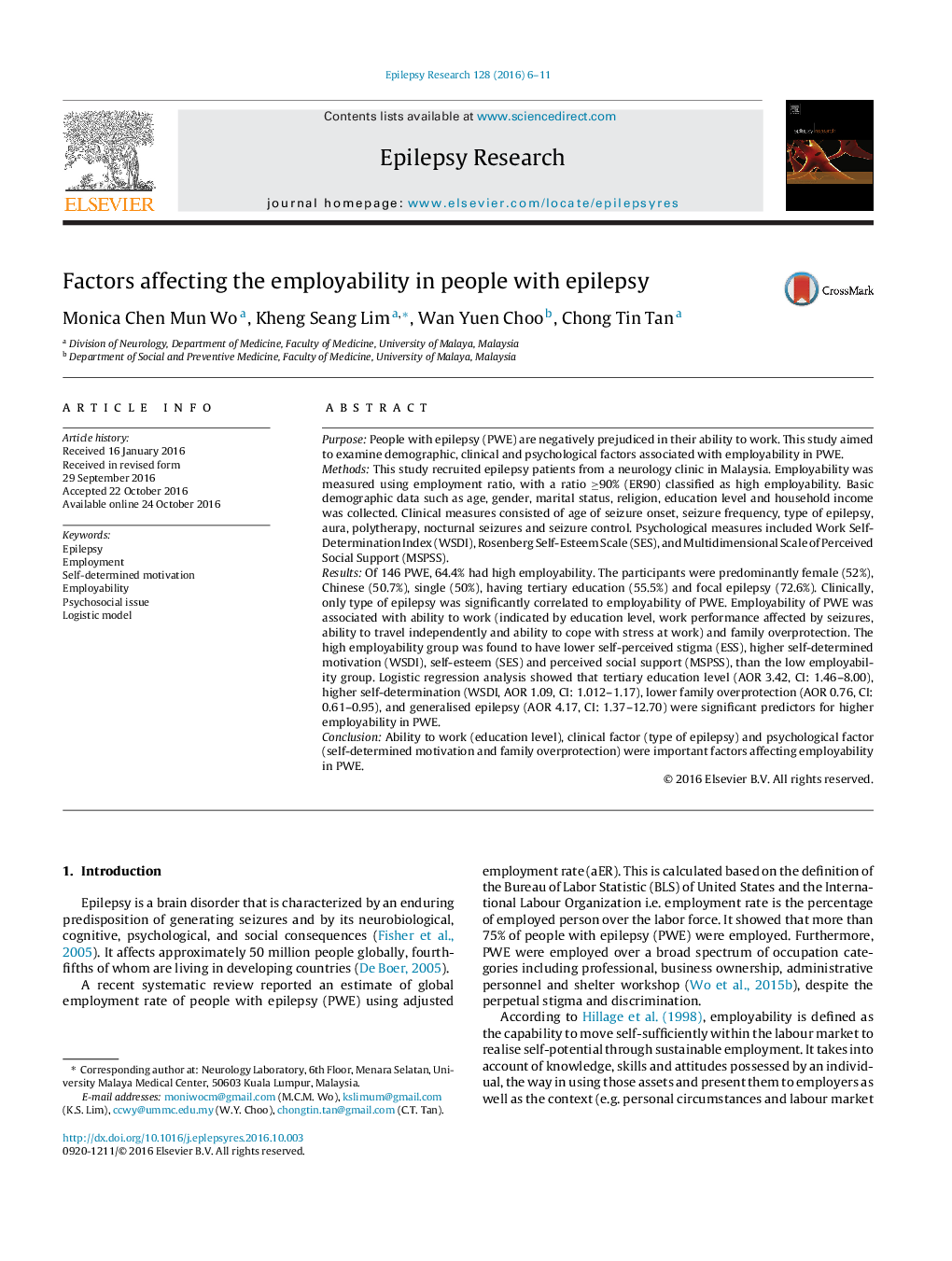| کد مقاله | کد نشریه | سال انتشار | مقاله انگلیسی | نسخه تمام متن |
|---|---|---|---|---|
| 5628616 | 1579895 | 2016 | 6 صفحه PDF | دانلود رایگان |
- Clinical, demographical and psychosocial factors were included in this study.
- Type of epilepsy was the only significant clinical predictor of employability in PWE.
- High employability group had significant higher education level.
- Self-determined motivation was important factor affecting employability in PWE.
PurposePeople with epilepsy (PWE) are negatively prejudiced in their ability to work. This study aimed to examine demographic, clinical and psychological factors associated with employability in PWE.MethodsThis study recruited epilepsy patients from a neurology clinic in Malaysia. Employability was measured using employment ratio, with a ratio â¥90% (ER90) classified as high employability. Basic demographic data such as age, gender, marital status, religion, education level and household income was collected. Clinical measures consisted of age of seizure onset, seizure frequency, type of epilepsy, aura, polytherapy, nocturnal seizures and seizure control. Psychological measures included Work Self-Determination Index (WSDI), Rosenberg Self-Esteem Scale (SES), and Multidimensional Scale of Perceived Social Support (MSPSS).ResultsOf 146 PWE, 64.4% had high employability. The participants were predominantly female (52%), Chinese (50.7%), single (50%), having tertiary education (55.5%) and focal epilepsy (72.6%). Clinically, only type of epilepsy was significantly correlated to employability of PWE. Employability of PWE was associated with ability to work (indicated by education level, work performance affected by seizures, ability to travel independently and ability to cope with stress at work) and family overprotection. The high employability group was found to have lower self-perceived stigma (ESS), higher self-determined motivation (WSDI), self-esteem (SES) and perceived social support (MSPSS), than the low employability group. Logistic regression analysis showed that tertiary education level (AOR 3.42, CI: 1.46-8.00), higher self-determination (WSDI, AOR 1.09, CI: 1.012-1.17), lower family overprotection (AOR 0.76, CI: 0.61-0.95), and generalised epilepsy (AOR 4.17, CI: 1.37-12.70) were significant predictors for higher employability in PWE.ConclusionAbility to work (education level), clinical factor (type of epilepsy) and psychological factor (self-determined motivation and family overprotection) were important factors affecting employability in PWE.
Journal: Epilepsy Research - Volume 128, December 2016, Pages 6-11
